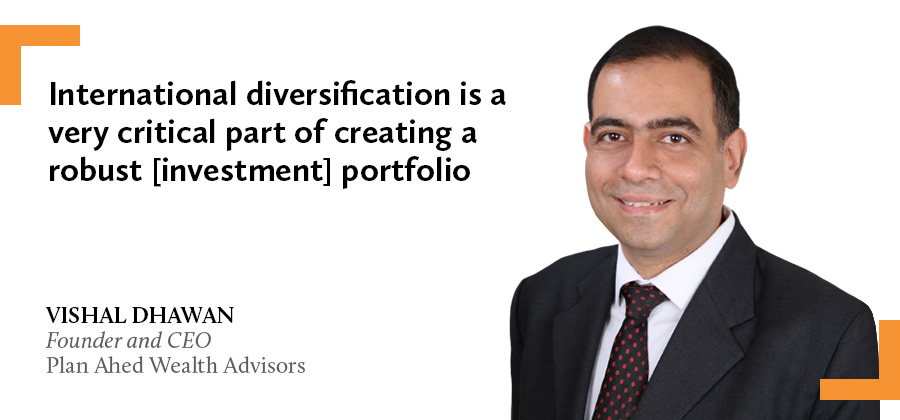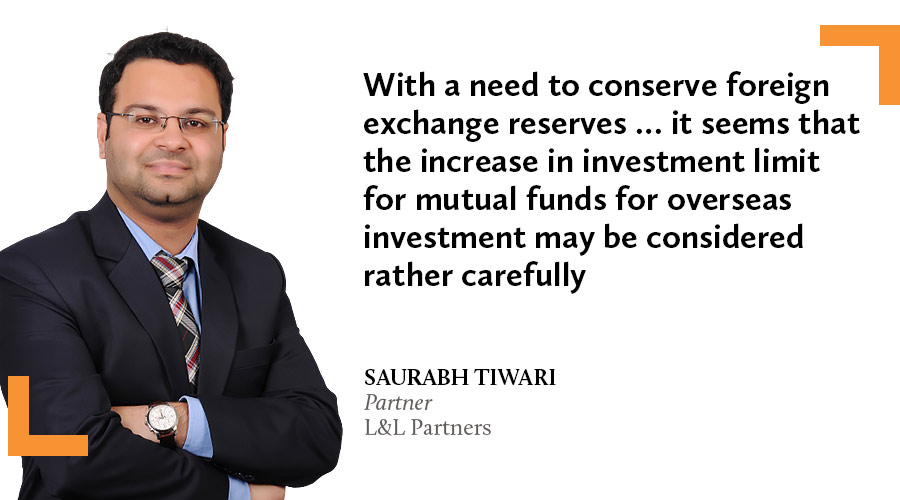As India’s foreign exchange reserves continue to shrink well below USD600 billion and the rupee continues to close at all-time lows, it is unlikely the Reserve Bank of India (RBI) will lift the restriction it imposed earlier this year barring mutual funds from making fresh investment overseas.
At the behest of the central bank, the Securities and Exchange Board of India (SEBI) issued an advisory back in late January, asking mutual funds to stop fresh investments into overseas stocks.
Strong headwinds
As India does not have capital account convertibility, there are longstanding restrictions on foreign exchange transactions regulating overseas investments by mutual funds.
Back in 2008, the capital market regulator imposed an overall industry cap of USD7 billion for mutual funds investing in overseas securities and funds. An additional limit of USD1 billion was imposed on investment in overseas exchange-traded funds.
Today, the continuing Russia-Ukraine war, fluctuating oil prices, India’s import requirements, the slow pace of post-pandemic economic recovery and high inflation all play a critical role in the cautious approach still adopted by regulators, Saurabh Tiwari, a New Delhi-based partner at L&L Partners, tells India Business Law Journal.
“With a need to conserve foreign exchange reserves in light of the import dependency for certain commodities and enabling support to the rupee, it seems that the increase in investment limit for mutual funds for overseas investment may be considered rather carefully,” says Tiwari.
The geopolitical headwinds thus dampen the Association of Mutual Funds in India’s (AMFI) expectations of a significant increase in the investment cap, although its chairman, A Balasubramanian, was quoted saying he anticipates the limit to more than double to USD15 billion when the “temporary” restriction is eventually removed.
Wishful thinking? Perhaps. But the USD7 billion cap was introduced nearly 14 years ago. Since 2008, there has been a vast increase in the number of international funds investing in the US, Europe, Japan and emerging markets including Taiwan, attracting Indian retail investors by their high growth stories.
Jolt for investors
“International diversification is a very critical part of creating a robust [investment] portfolio,” says Vishal Dhawan, founder and CEO at Plan Ahead Wealth Advisors in Mumbai, advocating the need for early enhancement of the investment limit.
The past 12 to 14 months witnessed an increase in traction towards foreign investment allocation, and saw the advent of a lot of new funds, which Kshitiz Mahajan, co-founder and managing partner at Complete Circle Capital in New Delhi, says “was not expected”.
While this year’s SEBI restriction may have come as a surprise and a major jolt for retail investors, diversification of assets beyond Indian borders is currently not a priority for the central bank, which is battling to defend the floundering rupee, says a Mumbai-based lawyer specialising in foreign exchange litigation.
As these investments are in USD terms, resulting in foreign exchange outflows, the regulators are “going a little slow while amending the law and approving it,” Mahajan tells IBLJ.
While there is no clarity on when the limit enhancement might take place, Dhawan adds: “It would have been ideal to have had this limit raised in advance so that disruptions were minimised.”
With international equity markets starting to correct, investors could have averaged their purchases through fresh investment allocations. The industry limits set up a long time ago were not utilised for long periods, he says, while international investment has gained more traction in the past couple of years.
Dhawan suggests the limit should be reviewed periodically and automatically – with any increase based on overall equity asset under management, rather than static limits.
Some investors have instead opted to use the liberalised remittance scheme limit of USD250,000. “For other investors, we are using international funds that invest in ETFs [exchange-traded funds] that are still open for subscription,” he adds.
Tiwari, of L&L, points out that although resident individual investors have the option to invest overseas through the liberalised remittance scheme, they generally rely on the convenience of systematic investment plans (SIPs) and the professional judgements of mutual funds when investing in securities.
“Restriction of investment avenues is not a good state for any industry,” he says, adding that overseas investment dedicated schemes of mutual funds will miss out on opportunities to increase or diversify their investment portfolios.
Trigger for change
Geopolitics and economic stability will be the key drivers for India to reinstate mutual fund investments overseas. It will be six months in June since the capital market watchdog imposed the restrictions. Considering the state of global markets, investors have missed many opportunities to average their overseas investments and buy at dips.
Nonetheless, the removal of the restriction is unlikely to take place overnight – not on the RBI’s watch, considering instability in the Indian stock market with foreign institutional investors having reportedly pulled out nearly USD20 billion since the beginning of the year. Not to mention India’s import dependency of essentials like crude oil.
The central bank will have to consider several factors before increasing the limit for overseas investment by mutual funds, says Tiwari. These include stability and clarity on the economic front, action taken by the market regulators in other jurisdictions, and the sufficiency of India’s foreign exchange reserves.
The sale of USD, which has an impact on foreign exchange reserves, will also be a factor considered by the central bank before increasing the limit, he says.
When overseas investment was permitted by mutual funds before 2008, foreign exchange reserves stood at about USD300 billion. While the reserves may have since doubled, the present global economic situation remains quite uncertain and is taking a toll in the decision-making process.




























